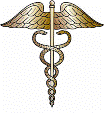
United States Public Health Resources
Date of this Version
2008
Abstract
Alcohol abuse results in liver injury, but investigations into the mechanism(s) for this injury have been hampered by the lack of appropriate in vitro culture models in which to conduct in depth and specific studies. In order to overcome these shortcomings, we have developed the use of precision-cut liver slices (PCLS) as an in vitro culture model in which to investigate how ethanol causes alcohol-induced liver injury. In these studies, it was shown that the PCLS retained excellent viability as determined by lactate dehydrogenase and adenosine triphosphate (ATP) levels over a 96-h period of incubation. More importantly, the major enzymes of ethanol detoxification; alcohol dehydrogenase, aldehyde dehydrogenase, and cytochrome P4502E1, remained active and PCLS readily metabolized ethanol and produced acetaldehyde. Within 24 h and continuing up to 96 h the PCLS developed fatty livers and demonstrated an increase in the redox state. These PCLS secreted albumin, and albumin secretion was decreased by ethanol treatment. All of these impairments were reversed following the addition of 4-methylpyrazole, which is an inhibitor of ethanol metabolism. Therefore, this model system appears to mimic the ethanol-induced changes in the liver that have been previously reported in human and animal studies, and may be a useful model for the study of alcoholic liver disease.


Comments
Published in Biochemical Pharmacology 76 (2008) 426 – 436.